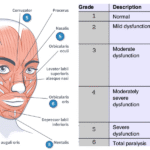Introduction to Laturedrianeuro
Laturedrianeuro is a term that has recently gained traction in various discourse frameworks, primarily within scientific, medical, and sociocultural contexts. It refers to a hypothetical phenomenon involving the transmission of awareness or consciousness, which has sparked significant interest and debate among scholars and practitioners alike. Originating from a confluence of interdisciplinary research, Laturedrianeuro embodies the intersection of neuroscience, psychology, and metaphysical inquiry, making it an intriguing subject for contemporary exploration.
The discussion surrounding Laturedrianeuro often revolves around its implications for understanding human connectivity, empathy, and social behaviors. As we analyze the potential for this concept to “spread” beyond individuals to a collective consciousness, we confront essential questions regarding the nature of human experience. Central to these discussions is the inquiry: can Laturedrianeuro spread? This inquiry transcends mere curiosity; it extends to fundamental issues of how individuals relate to one another and how shared experiences may shape societal norms and influences.
<pfurthermore, and=”” as=”” attempt=”” be=”” behaviors=”” cognitive=”” communication=”” community=”” could=”” critique,=”” curiosity=”” education,=”” emotional=”” enhance=”” exploration=”” extends=”” fields=”” foster=”” health,=”” how=”” illuminate=”” improved=”” innovative=”” insight=”” interconnected=”” interpersonal=”” interventions,=”” into=”” invites=”” largely=”” laturedrianeuro=”” lead=”” mechanisms=”” mental=”” might=”” nuances=”” of=”” ongoing=”” p=”” phenomenon=”” relationships.=”” relevance=”” researchers=”” resilience.=”” spread=”” still=”” strategies,=”” such=”” the=”” therapeutic=”” this=”” through=”” to=”” topic=”” uncharted.
In venturing further into this article, we shall delve deeper into the scientific underpinnings, anecdotal evidence, and potential ramifications surrounding Laturedrianeuro. Ultimately, this examination seeks not merely to address whether Laturedrianeuro can spread, but to illuminate the fascinating complexities inherent in this emerging discourse.
Mechanisms of Spread
The potential spread of Laturedrianeuro raises numerous questions regarding the underlying mechanisms that may facilitate its transmission. Various scientific theories and research findings present a multifaceted view of how this organism might disseminate across different environments. One primary mechanism of spread could involve direct contact with infected hosts, which can serve as vectors, transmitting Laturedrianeuro from one organism to another. For instance, studies have documented how certain insects can harbor pathogens, later exposing new hosts through bites. Additionally, environmental factors, such as temperature, humidity, and other climatic conditions, may significantly influence both the survival of Laturedrianeuro in the wild and the likelihood of contact with potential new hosts.
Another area of exploration involves the role of vectors in the transmission of Laturedrianeuro. Understanding these vectors can provide crucial insights into the methodologies through which it spreads. Research has highlighted the importance of ecological interactions; for example, certain animal species act as reservoirs for the organism, creating pathways for infection among different populations. Furthermore, anthropogenic factors, such as habitat alteration and globalization, exacerbate the spread of infectious diseases, including Laturedrianeuro, by introducing it to new geographic regions.
Case studies have further elucidated these complexities. In controlled environments, researchers observed instances of Laturedrianeuro spreading rapidly, underscoring the need for ongoing observation in natural settings. Such studies validate the hypothesis that environmental conditions significantly influence the organism’s ability to thrive and spread. By dissecting these mechanisms, researchers can develop strategic approaches to monitor and, if necessary, mitigate the spread of Laturedrianeuro, paving the way for better understanding and management of this unfolding mystery.
Implications of Laturedrianeuro’s Spread
The potential spread of Laturedrianeuro carries significant implications across various domains, including health, ecology, and societal structures. Understanding whether and how Laturedrianeuro can spread is vital for numerous stakeholders, as the consequences of its dissemination could lead to both risks and advantages. In the health sector, for example, researchers and medical professionals are wary of the emerging data surrounding Laturedrianeuro. If it possesses pathogenic characteristics, its spread could lead to increased morbidity or mortality rates. This concern has prompted health authorities to monitor environmental shifts that may facilitate its distribution.
In ecological terms, the implications are profound. The spread of Laturedrianeuro may alter local ecosystems, affecting native flora and fauna. Ecologists emphasize the importance of studying how this entity interacts with existing species, as it could either compete with them or transform ecological balances. Such changes might also affect agriculture, impacting food security and crop production if Laturedrianeuro interacts unfavorably with plant species. The agricultural community remains vigilant, recognizing the need for adaptive measures in the face of potential biotic threats.
From a societal standpoint, the inquiry into can Laturedrianeuro spread involves public health policies, community preparedness, and economic stability. Public health campaigns may need to adapt based on anticipated scenarios involving Laturedrianeuro. Furthermore, the dissemination of knowledge regarding its potential spread could foster community involvement, adapting behavior or practices that mitigate risks. Economists have begun conducting analyses to estimate the financial impact of Laturedrianeuro’s spread, highlighting its importance to trade and industry. As experts in various fields continue to explore the complexities of Laturedrianeuro, it becomes increasingly clear that its implications extend far beyond scientific inquiry, encapsulating a wider societal context that merits close attention.
Future Research and Perspectives

The continued investigation into Laturedrianeuro presents a myriad of opportunities for future research. Despite the existing body of knowledge, numerous aspects of this enigmatic phenomenon remain shrouded in uncertainty. For instance, one of the critical areas in need of further exploration is the mechanisms underlying the propagation of Laturedrianeuro. Understanding the biological and environmental factors that contribute to its spread could provide valuable insights. Additionally, research endeavors could focus on the potential vectors involved in transmission, which may hold the key to answering the inquiry, “can laturedrianeuro spread?”
Another essential dimension of future studies lies in the epidemiological aspects surrounding Laturedrianeuro. Examining patterns of occurrence and cross-referencing these with geographic and demographic data can elucidate whether specific populations or regions are more adversely affected. By engaging in comprehensive surveillance and utilizing advanced statistical models, researchers can develop a clearer picture of the spread and impact of Laturedrianeuro on human health and the environment.
The importance of public awareness and education cannot be overstated in the context of Laturedrianeuro. As scientific inquiry continues, engaging the public in understanding the findings and implications of ongoing research is crucial. Awareness can drive community preparedness and foster a proactive approach to mitigating potential risks associated with Laturedrianeuro. Furthermore, interdisciplinary collaboration among scientists, public health officials, and policymakers could lead to a more unified response to this complex issue.
In conclusion, the question of whether “can laturedrianeuro spread?” remains an open and vital topic for future research. Emphasizing its importance and the need for continued investigation will not only enhance our understanding of the phenomenon but also pave the way for informed decision-making and action in response to any potential challenges it may pose.






